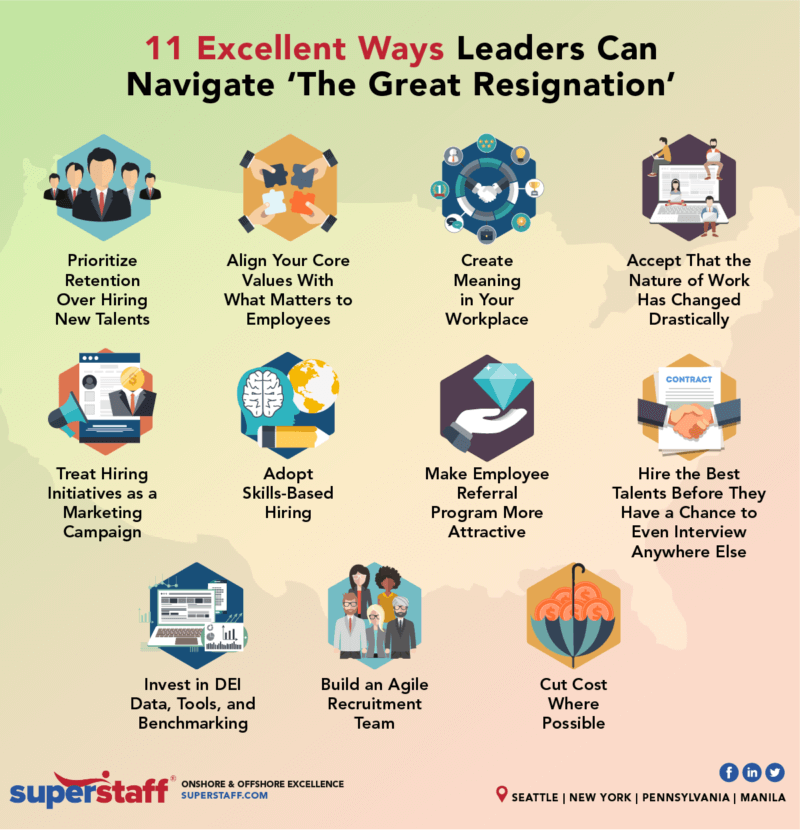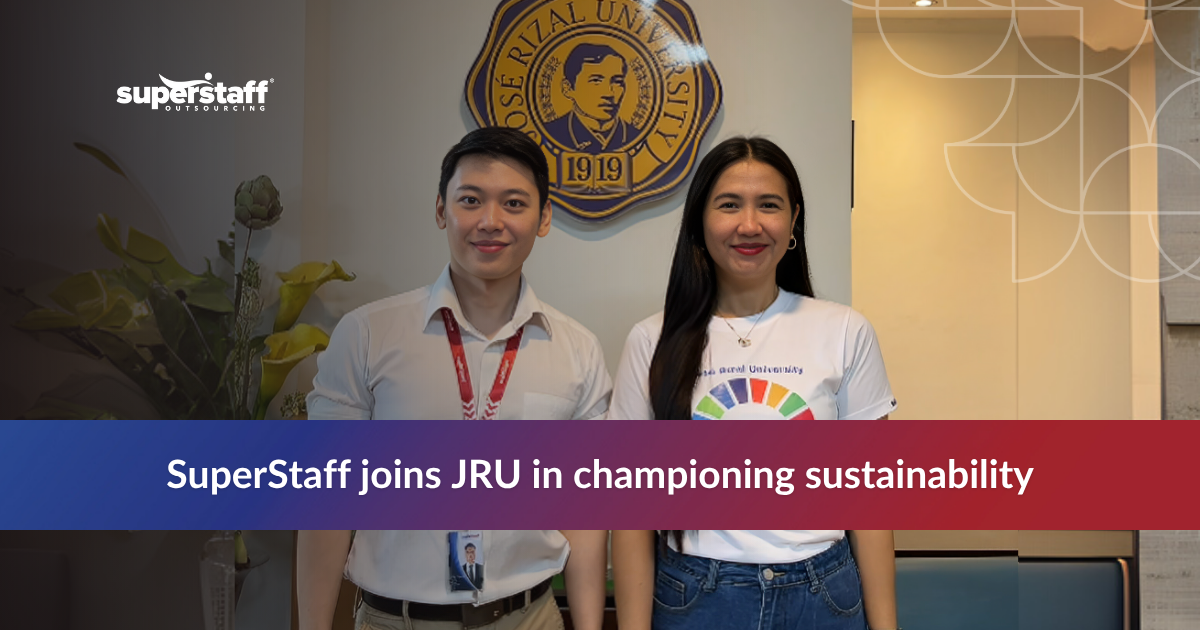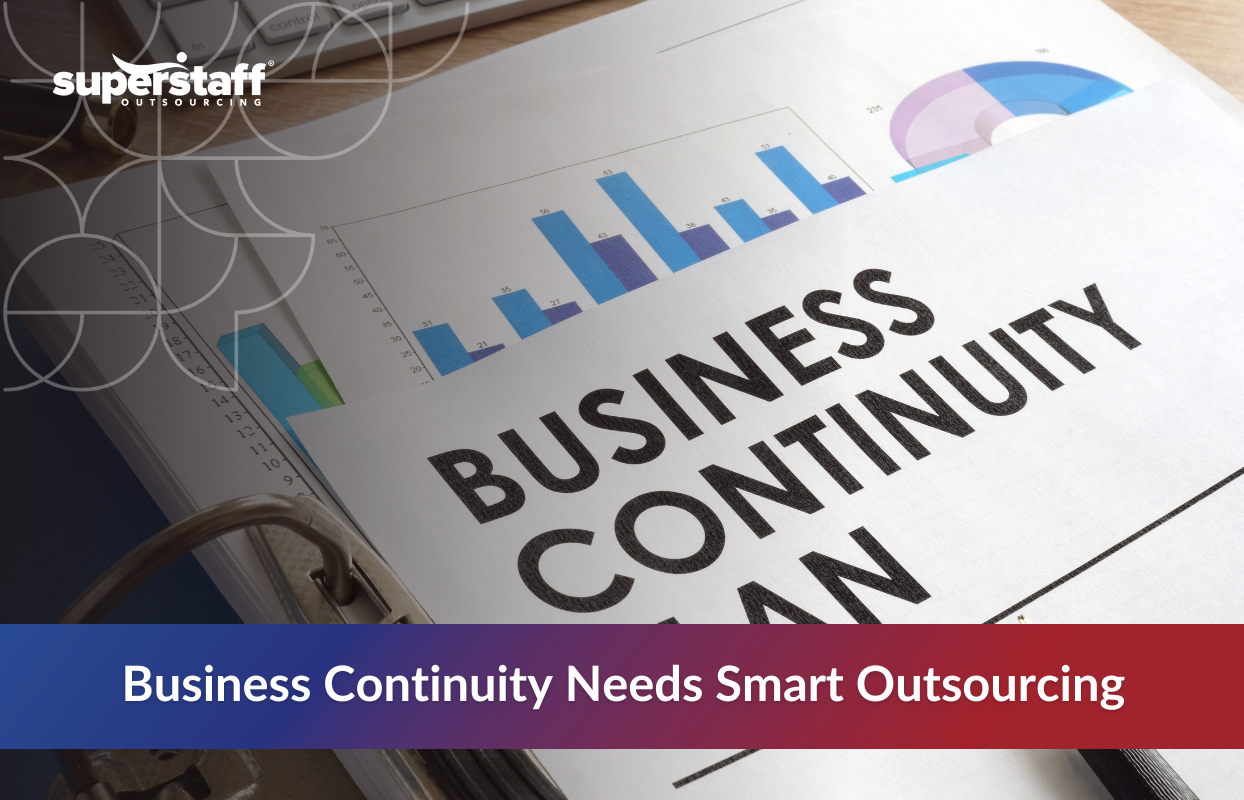
The tide has turned. As of the last business days of November, 10.6 million job openings in the U.S. remain unfilled. The record-high number of employees quitting the workforce has HR leaders and employers chartering unfamiliar territory. Many are having challenges navigating “The Great Resignation.”
Is ‘The Great Resignation’ Real?
Despite the unusually high number of employees who quit, many still cast doubts on the reality of “The Big Quit” or the gravity of its impact. Some think that “The Great Resignation” is merely a great exaggeration, that employees are just taking a momentary break and will soon get back into the game.
While optimism is a welcome disposition, maintaining such a simplistic view may lead to catastrophic results. If you trace the trail of other significant events affecting American businesses today—from supply chain woes to wage hikes—you’ll be confounded by the plain and obvious fact that, indeed, “The Great Resignation” is real.
Instead of denying or downplaying the issue, leaders will do better facing it head-on. That said, let’s discuss how to navigate “The Great Resignation.”
Digging Deep and Getting Real: How Leaders Can Navigate ‘The Great Resignation’
#1: Prioritize Retention Over Hiring New Talents
Turnover has always been expensive. Gallup estimates that losing talents costs American businesses at least $1 trillion. But in today’s labor climate, attrition hurts businesses more than ever. The importance of taking care of your existing employees and investing in their well-being definitely cannot be overstated.
The pandemic has employees facing unique sets of mental, emotional, physical, and financial challenges that redefine their expectations from employers. So far, many companies have responded to the call. A 2020 survey of HR leaders showed that:
- 94% of businesses have significantly invested in their employee well-being programs
- 85% have elevated their mental health support initiatives
- 50% have increased support for physical wellness
- 38% have increased support for financial well-being
Many are starting to think the pandemic crisis is subsiding this year. However, the Omicron variant has again blurred how employees should go about their present and future day-to-day. About 44% of companies that had earlier set their eyes on a return-to-the-office date held off reopening plans indefinitely. But leaders can and should do more.
The COVID-19 pandemic has increased the clamor for a new kind of leadership, one that’s more compassionate, grounded, and empathetic. Aside from prioritizing the physical safety of your employees, recognize how grappling with uncertainties is taking a tremendous toll on their already-vulnerable mental and emotional states.
Maintain constant and honest communication with your people. Even if you don’t have exact answers or a clear path ahead, simply showing up and acknowledging their concerns can help relieve some of their anxieties. Showing empathy will enable you to create an environment that better supports what your employees need to stay productive and engaged.
Read More: Compassion as a Compass: How SuperStaff Navigates the Challenges of Leading in the New Normal
#2: Align Your Core Values With What Matters to Employees
Employees expect and believe that businesses should serve as forces for good. Research showed that 52% of employees would likely quit their jobs if their company’s values did not align with theirs.
Leaders have to recognize that employees are in the driver’s seat and are in the position to demand accountability—among other things—from them. Companies should see this as an opportunity to dig deep and honestly evaluate who they are and what they believe in as an organization.
How well does your internal brand, the narrative your company tells your people, sits well with your employees? How is the story reflected in the day-to-day grind at the workplace? How are the management and other stakeholders living out the company’s values in and outside the office? Answering these all-important questions will help you create meaning in the workplace.
Read More: Job Seekers’ Wishlist 2022: Top 7 Hiring Practices to Implement Amid ‘The Great Resignation’
#3: Create Meaning in Your Workplace
Anthony Klutz, the professor who gave birth to the term “The Great Resignation,” explained that among the reasons why employees are quitting is because they had a pandemic epiphany. COVID has profoundly impacted how employees view work and what they want to get out of it.
Employees want to feel a greater sense of significance in investing their time and effort. This part is where leaders need to build purpose and transform the company’s core values into impacts. Employees who take pride in what they do are more engaged and productive.
Navigate “The Great Resignation” by giving your employees deeper reasons to brave through the uncertainties of the current times. Take advantage of your one-on-one interactions to help them understand their purpose and how their work matters to their customers, families, the community, the society, the environment, and other sectors outside your office’s walls, be it virtual or physical.
#4: Accept That the Nature of Work Has Changed Drastically
The Great Resignation” has altered labor and workplace dynamics for good. Employees want and afford themselves the power to design their work lives. Whether companies like it or not, remote and hybrid work arrangements will stay and outlive the pandemic. The best response to navigate “The Great Resignation” is to give employees as much flexibility as possible.
Experiment with arrangements that work best for your organization, and proactively involve the employees in this initiative. Some companies that have embraced the hybrid setup give employees the liberty to choose their in-office days. Others go as far as allowing employees to work asynchronously, giving them the freedom to choose their working hours as long as they meet expectations.
Read More: The Future of Recruitment Process Outsourcing: 2021 Hiring Trends That Address the Hybrid Work Model
#5: Treat Hiring Initiatives as a Marketing Campaign
Hiring managers should see “The Great Resignation” as a competition for talents’ attention and approach the issue the way ad agencies would. One cannot simply rely on the traditional post-and-pray approach. To drive results, you have to be relentlessly proactive, strategic, and creative.
Draw out a well-researched and robust plan to increase your company’s visibility and communicate your culture. Along with (or perhaps more than) an attractive compensation and benefits package, your culture should be your most important selling point. Research shows that:
- 46% of job seekers consider culture an important factor in choosing a prospective employer.
- 86% would also avoid employers with a negative public image.
- 15% would decline a job offer due to poor company culture.
One important note, though. Before marketing your brand as a great-culture champion, take an honest look at how your organization fares in this area. Assess how your people, starting with the leaders, cultivate a positive workplace culture.
Do not assume that marketing is enough to attract and retain top candidates. You may put out the most impressive campaigns and ad copies, but if your culture doesn’t live up to the expectations, the initiative will likely produce the opposite results. Nothing hurts one’s image the way empty words do.

#6: Adopt Skills-Based Hiring
Many companies were already having challenges filling some positions due to a lack of qualified candidates even before the pandemic. As “The Great Resignation” further shrinks the pool of viable candidates, recruiters need to find or create ways to expand their talent sourcing fields. To navigate “The Great Resignation,” shift from pedigree-based to competency-based hiring.
Look for candidates who possess enough soft skills to succeed in one crucial job area and build from there through a robust upskilling and reskilling program—which you can highlight as a unique selling point. You may also consider hiring talents from an industry completely different from yours but require similar employee skill sets.
Take what LinkedIn did, for instance. After finding out that professionals in the foodservice industry possess 71% of the skills needed in customer service, the professional networking platform developed a career transition program enabling candidates to land in-demand jobs in the said industry.
#7: Make Employee Referral Program More Attractive
Your best brand ambassadors are the ones who are on your current payroll. With nearly everyone maintaining at least one personal social network, employers cannot underestimate the power of virtual word of mouth.
One study revealed that brand messages shared by employees get 24 times more reshares than when shared by the company. Referred employees are also likely to stay longer in a company.
Businesses must go above and beyond offering incentives to encourage current employees to be brand advocates. You have to sell the program to your existing workforce before selling it to others, so it has to be a well-thought-out internal marketing campaign.
Of course, offering cash incentives remains the most significant driver, but you should not underestimate the value of non-monetary perks. Gifts that afford employees exciting experiences, such as an exclusive travel voucher, make excellent pairs with cash incentives. Lastly, don’t forget about the intangible reward of recognizing and boosting the morale of your top referees.
#8: Hire the Best Talents Before They Have a Chance to Even Interview Anywhere Else
Today’s job seekers, especially those with stellar qualifications, have way too many options available at their disposal. If you want to hire the best talents, your recruitment strategies must stand out among the rest.
Speed up time-to-hire as much as you can. If you need to, tap a third-party provider with expertise in the area. Interview candidates at the soonest—before they even get the chance to hear a pitch from another employer. Interviews are no longer just an employer’s tool. Candidates also use it to assess future employers, so make the most out of it by leaving the best impression.
Follow through with your commitment to update the candidates after the interview and do it promptly. Whether you end up hiring the talent or not, providing excellent candidate experience will yield long-term positive results for your brand.
#9: Invest in DEI Data, Tools, and Benchmarking
Employees want companies to take real action on promoting workplace diversity, equity, and inclusion. While many organizations have laid out their best intentions to elevate DEI, most have challenges in execution.
To achieve tangible progress, you must adopt measurable and scalable ways to ensure that your DEI initiatives are sustainable. Set realistic targets and invest in robust DEI data, tools, and benchmarks. Be intentional in identifying gaps and developing data-driven actionable insights to address them.
#10: Build an Agile Recruitment Team
The labor shortage has put many organizations’ recruitment strategies to the test. Judging by the numbers, many are falling short. To navigate “The Great Resignation,” businesses need access to a recruitment team ready to enable them to scale quickly amid a complex array of challenges. But just as challenging it is to find people to fill open positions, building an agile recruitment team is not an easy task.
Partnering with a reputable recruitment process outsourcing (RPO) provider can help you navigate “The Great Resignation” with ease. You can save enormous time, effort, and resources by leveraging your partner’s existing talents, skills, and knowledge of the recruitment industry and the labor market. Through RPO, many U.S. companies, including large-scale corporations, have gained the flexibility needed to respond to emerging challenges swiftly.
#11: Cut Cost Where Possible
We’ve heard and read time and again how “The Great Resignation” has prompted record-high increases in wages and salaries. Stakeholders may find the thought unsettling but soon have to accept the reality that hiring the best talents at this time and age will be costly. People are and will continue to be your greatest asset and investment.
This statement, however, doesn’t mean that you can’t mitigate your expenses. Take the time to assess your priorities and strengths to make the best possible financial appropriations. Chances are, you’ll find areas where you can reduce costs by delegating some functions to a third-party provider.
Survive “The Great Resignation” by Partnering With an Agile RPO Provider
SuperStaff is an outsourcing service company providing diverse staffing solutions to businesses across the U.S. and other parts of the world. Allow us to help you navigate “The Great Resignation” with solutions developed specifically to address your business’s unique needs and challenges. Contact us today.






